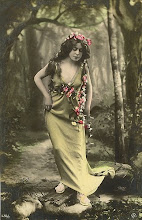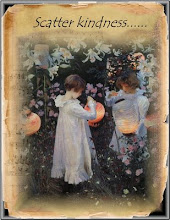Tuesday, February 9, 2016
The History of Quilting (Part 1 The Origins)
(When I started researching quilting I did not know how extensive it is. There is a lot of information out there on Quilting. So I decided to split up what I found into several parts. I hope that you enjoy what I have found and I hope that this inspires you.)
Quilting: It is defined as the stitching together of layers of fabric and padding. Quilts have also been referred to as a "fabric sandwich".
The name quilt actually came from the Latin word Culcita meaning "stuffed sack". It made it into the English language from the French word Cuilte.
How quilting came to be and how far back in time it started is not known. But we do know that the quilting techniques we use today have been used for several millennia.
One of the earliest known quilted garments is depicted on a carved ivory figure of a Pharaoh of the Egyptian first dynasty from about 3400BC.
In 1924 archaeologists discovered one of the oldest surviving quilted objects. Found in Mongolia it is a quilted floor covering. It's age is around 100BC to 200AD. The motifs depict animals with abstract spirals on the borders of the covering. It is worked in a back stitch while the background is diamond quilted in a coarse running stitch.
Another quilted artifact that is about as old as the floor covering is a quilted slipper found in Samarrand in a rubbish heap. The backstitch used on the slipper is identical to the one used on the rug.
Samarrand was a major stop on the Silk Road between China and Europe. The one thing for sure is the early objects that were found contain Egyptian cotton. It seems that the Egyptian and Mediterranean trade influenced early quilting.
In the late 11th century among many other thing brought back from the Crusades quilted objects were one of them.
The evidence of quilting made its presence known in the 12th century Europe. Not only was quilted padding used under a knights armor but also there is a reference to a quilt adorning a bridal bed in a French poem entitled "La Laide Desire".
In the 13th century German "Parvizal" mentions a quilt in Grail Castle.
In the 14th century quilted clothing began to appear in France, Germany, England and Italy. Also in the 14th century quilting may have started working its way into the lower classes. Until this time quilting was fairly common in the upper classes. Arriving at this conclusion a 14th century Italian ivory shows St. Joseph traditionally regarded as a peasant or lower class artisan wearing a diamond quilted tunic.
The oldest known bed quilt also survives from the 14th century. Found in Sicily it is made of Linen and padded wool blocks across the center of it are scenes from the legend of Tristan its size is 122" by 106".
Surviving quilts from these periods are mainly Linen or silk worked with matching thread and stuffed with cotton.
Information found:
https://en.wikipedia.org/wiki/Quilting
http://www.quilthistory.com/quilting.htm
Quilting: It is defined as the stitching together of layers of fabric and padding. Quilts have also been referred to as a "fabric sandwich".
The name quilt actually came from the Latin word Culcita meaning "stuffed sack". It made it into the English language from the French word Cuilte.
How quilting came to be and how far back in time it started is not known. But we do know that the quilting techniques we use today have been used for several millennia.
One of the earliest known quilted garments is depicted on a carved ivory figure of a Pharaoh of the Egyptian first dynasty from about 3400BC.
In 1924 archaeologists discovered one of the oldest surviving quilted objects. Found in Mongolia it is a quilted floor covering. It's age is around 100BC to 200AD. The motifs depict animals with abstract spirals on the borders of the covering. It is worked in a back stitch while the background is diamond quilted in a coarse running stitch.
Another quilted artifact that is about as old as the floor covering is a quilted slipper found in Samarrand in a rubbish heap. The backstitch used on the slipper is identical to the one used on the rug.
Samarrand was a major stop on the Silk Road between China and Europe. The one thing for sure is the early objects that were found contain Egyptian cotton. It seems that the Egyptian and Mediterranean trade influenced early quilting.
In the late 11th century among many other thing brought back from the Crusades quilted objects were one of them.
The evidence of quilting made its presence known in the 12th century Europe. Not only was quilted padding used under a knights armor but also there is a reference to a quilt adorning a bridal bed in a French poem entitled "La Laide Desire".
In the 13th century German "Parvizal" mentions a quilt in Grail Castle.
In the 14th century quilted clothing began to appear in France, Germany, England and Italy. Also in the 14th century quilting may have started working its way into the lower classes. Until this time quilting was fairly common in the upper classes. Arriving at this conclusion a 14th century Italian ivory shows St. Joseph traditionally regarded as a peasant or lower class artisan wearing a diamond quilted tunic.
The oldest known bed quilt also survives from the 14th century. Found in Sicily it is made of Linen and padded wool blocks across the center of it are scenes from the legend of Tristan its size is 122" by 106".
Surviving quilts from these periods are mainly Linen or silk worked with matching thread and stuffed with cotton.
Information found:
https://en.wikipedia.org/wiki/Quilting
http://www.quilthistory.com/quilting.htm
Subscribe to:
Post Comments (Atom)

























No comments:
Post a Comment